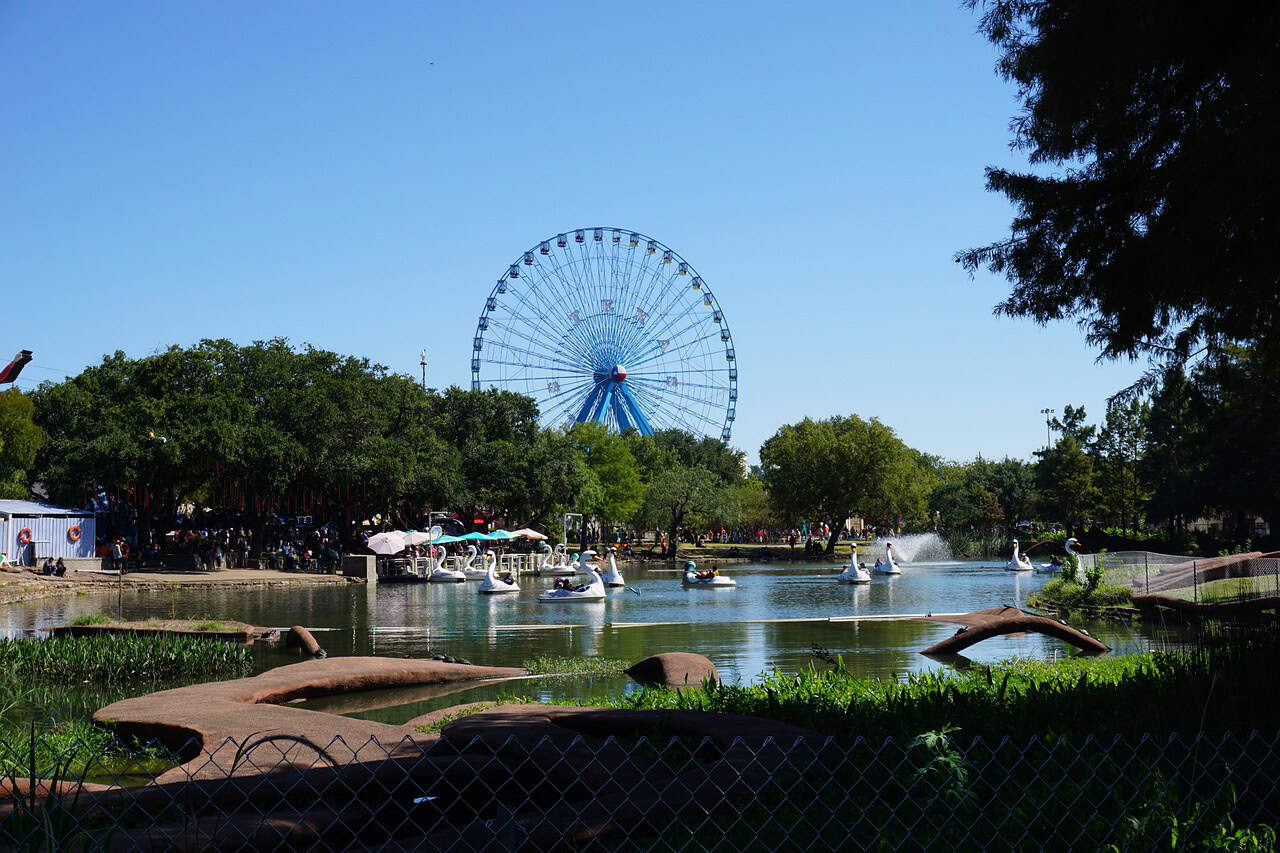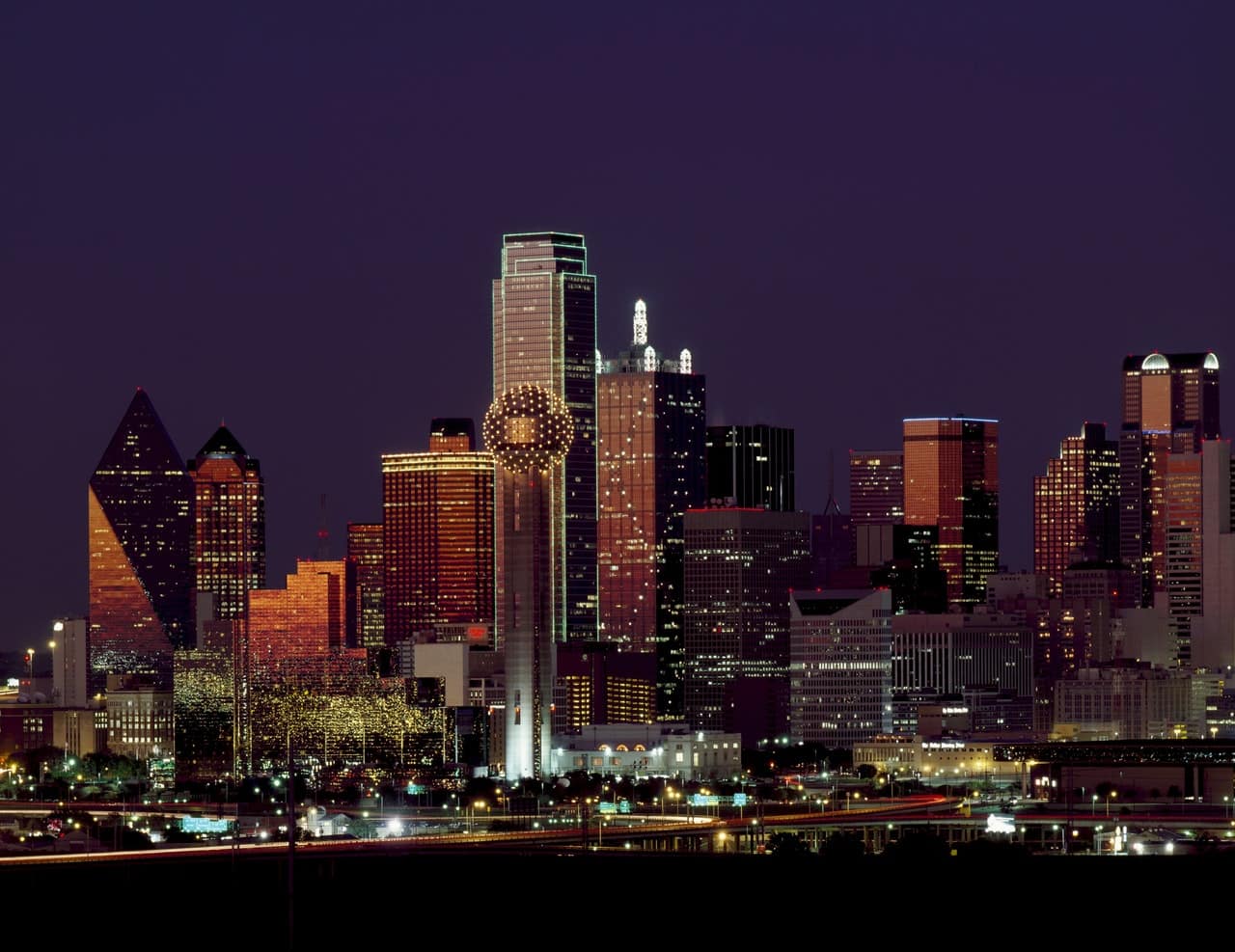
A bit about the city of Dallas
Dallas is the largest banking and financial center in the Southwest (more than 100 insurance companies are headquartered; numerous banks, including the Federal Reserve Bank); a center of the advertising business and the oil and gas industry.
It is a heavily populated city. Dallas is the 9th most populous city in the United States and the 3rd most populous in the state of Texas.
History
The history of Dallas (or as it is also called Big D or City of Hate) dates back to 1841, when John Neely Bryan chose a site along the river as a trading post.
In 1842, several settlers arrived at Bryan’s newly formed camp. The settlement later became known as Peter’s Settlement. In 1845, Petra Settlement was renamed Dallas, after U.S. Vice President George Mifflin Dallas (1792 – 1864). Dallas was officially designated a township in 1856 and a city in 1871.
Dallas was a supply base for Confederate troops during the Civil War (1861-65).
In 1871, work was under way in Texas to lay a railroad that would bypass Dallas, but the Texas Pacific Railroad Company, which was building the railroad, could not resist the tempting offers of free land from Dallas leaders. As a result, the road went 32 miles west of what had been previously planned. Thus, since 1872, the railroad passed through Dallas, which greatly contributed to the development of the city.
From 1872 to 1886 the population of Dallas grew from 6,000 to 36,000. Dallas became one of the world’s largest suppliers of cotton, and by 1900 the city had become a regional center for the cotton trade.
The next boom in Dallas came in 1930, when huge oil deposits were discovered near the city. Thanks to this discovery, many Dallas residents quickly became rich. That same year, the world learned of Dallas outlaws Clyde Barrow and Bonnie Parker, better known as Bonnie and Clyde.
On November 22, 1963, President John F. Kennedy was assassinated in his motorcade driving through downtown Dallas. Two bullets were fired at Kennedy, in the head and neck. Governor Connally of Texas, who was in the motorcade with Kennedy, was wounded.
After Kennedy’s assassination, Dallas worked hard to restore its reputation. In 1973, the city opened the Fort Worth Dallas Airport, and in 1984, the national convention of the Republican Party was held. From 1980 to 1982, Dallas hosted the filming of the TV series of the same name, which had the highest ratings among late-night shows in the United States.
In 1998, the city experienced the worst drought in history. Temperatures reached 56°C for 29 consecutive days, killing more than 100 people and causing irreparable damage to crops.
In the twenty-first century, Dallas is considered not only a center for cotton production and oil refining, but also a center for women’s fashion and a regional center for financial and insurance institutions.
Today Dallas
Today Dallas is a modern metropolis, a beautiful city with green parks and a busy nightlife, with glass skyscrapers that amaze with their architectural forms and where the headquarters of famous American corporations are located. You rarely see anyone on the streets during the day, except commuters: the city is quiet and peaceful, the locals are all at work.


Modern Dallas is the center of women’s fashion, oil companies, cotton production, and one of the largest airplane manufacturing centers in the United States.
It is a major scientific and cultural center. The city is home to the headquarters of the American Heart Association. Among the higher educational institutions such universities as Bishop College (founded in 1881), Dallas Baptist University (1898), Baylor College of Dentistry (1905), Southern Methodist University (1911), University of Texas Southwestern Medical Center (1943), El Centro College (1966), etc. are highly ranked.
The city is young and athletic. It has four professional teams that belong to the major sports leagues – Dallas Stars hockey team, Dallas soccer team, Dallas Cowboys American soccer team and Dallas Mavericks basketball team.
Dallas is not just a place for business and business travel.
It is a beautiful, modern and rich in attractions.
Some of which are:
Reunion Tower
If you don’t have much time to explore Dallas, you can visit the 171-meter-high Reunion Tower. At the very top of the tower is an observation deck with touchpads to quickly find all of the city’s major attractions on a virtual map.
The Dallas Museum of Art
This is a popular place among tourists. It is considered the richest museum in the world. It contains works by orthodox painters, sculptures by famous masters, engravings, works of ceramics, porcelain, textiles, and even jewelry.
The Red Museum
The Red Museum or the old Dallas County Courthouse, built in 1892. It is a magical sandstone castle with 4 large columns. Today it is a history museum and has the status of a historical site in Dallas.
American Airlines Sports Center Stadium
This stadium was built in 2001. It hosts games and practices of local basketball and hockey teams.
The Dallas Botanical Gardens
The Dallas Botanical Gardens and Arboretum opened in 1984. A beautiful romantic place for couples in love. The Botanical Garden is listed on the National Register and is a historic site in the United States.
Pioneer Plaza Dallas
White Rock Reservoir is a municipal park. Many birds live there, and mammals include squirrels and beavers. It is a green park with many trees and grasses. It’s a great place for a relaxing vacation.
